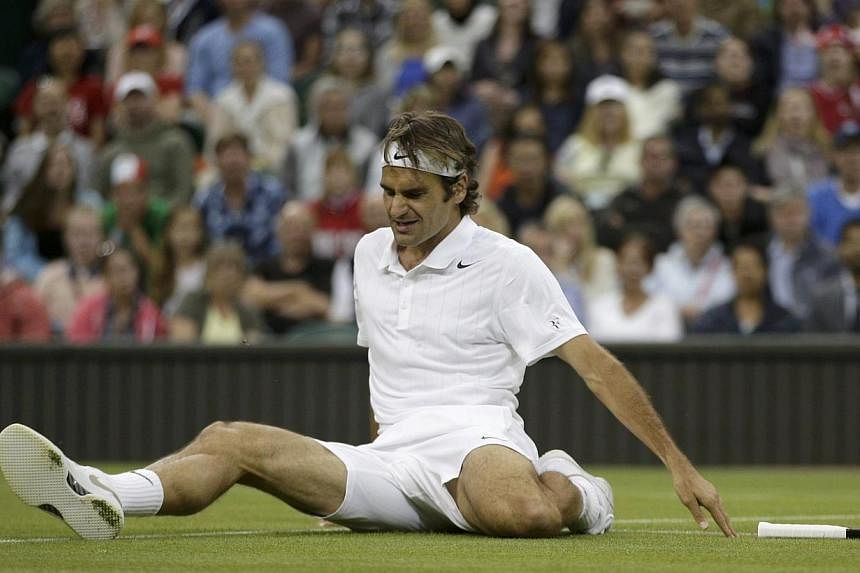LONDON (REUTERS) - Wimbledon's head groundsman Neil Stubley is relaxed and calm as he watches the cream of international tennis battle it out on his turf - a far cry from a year ago, when a spate of injuries took an extraordinary toll on players.
The series of mishaps, which led seven players to pull out injured, has gone down in tennis circles as "Wimblegeddon".
Maria Sharapova, who slipped three times in one day, had complained that conditions on the court were dangerous. This year, the Russian wasn't complaining but she was cautious. "You can't just forget about it ... it's in the back of your mind," she said after winning her second match on Thursday.
With a year's perspective, and with Wimbledon champion Andy Murray saying the courts this year are "perfect", Stubley said a post-mortem had found the courts were in much the same shape on that fateful June 26 they had been for previous championships.
"What happened last year was because it was a couple of high-profile players, all of a sudden people forgot that in the early rounds of a grass-court tournament there is the potential to slip because there is moisture in the leaves," the 45-year-old Londoner, who officially took up his post in 2012, said.
"And you know it's just a case of kind of riding it out," he said, adding that when a journalist asked at the time if he was losing sleep his response was that he had a six-week-old baby at home "so how do you think I slept last night?".
"I wouldn't say that we are blase or complacent with any of that," he added. "I think it just made us look at the information and just to make sure that where the courts should be for that part of the tournament, they were - and they were.
"And it's the same issue, the courts this year are pretty much identical as they were last year. You've had few players slipping this week but then you will have. You can go back all the way to the Rod Lavers, the Boris Beckers, they were slipping back then because it's the nature of the beast.
Stubley is able to talk authoritatively about the condition of Wimbledon's 41 practice and competition courts on any given day because they are like super high-tech lawns.
They are built on a half-metre layer of gravel and soil, with the same construction as a US golf course, but with clay in place of sand. They have built-in sensors and there are daily checks of their condition by independent monitors.
An immense amount of research and technology has gone into building the courts but basically it was trial and error that resulted in replacing the former three-grass seedings with just one grass type, rye.
Rye was the only one of the three that survived more or less until the end of the two-week tournament, Stubley said.
And while the other grasses grew laterally, and tended to create a thatched cushion underfoot, rye grows up straight. The result is that the Wimbledon courts now have more bounce than they did in the past - a rough estimate being that they have 70 per cent of the bounce of a clay court, Stubley said.
It's had a big effect on the tournament, he said, because players who formerly avoided Wimbledon because they were clay-court specialists are more likely to enter.
"It's a positive that all of the players now want to come here and the best players in the world, all of them potentially can win Wimbledon now, it's not just the Pete Samprases of the world that can win it."
And is there a special trick to growing the grass at Wimbledon, whose uniformly cut 8mm blades are the envy of gardeners worldwide?
"In the UK we have the perfect climate for growing grass - it doesn't get too hot, we have plenty of rain," Stubley said. "I don't like telling too many people that because I try to make as if our job's quite difficult but to be honest growing grass essentially is not that hard - producing the playing surface is the skill."

